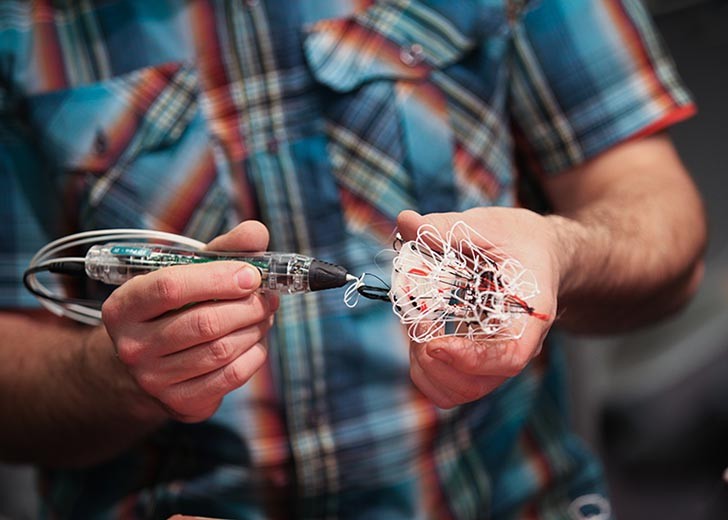BTN.com LiveBIG Staff, August 1, 2017
If we had a nickel for every time we did a LiveBig story about maker spaces or 3D-printing we?d…have enough money to open our own 3D-printing maker space.
Penn State is doing something a little different: A mobile maker space that will determine whether similar whiz-bang experiences actually deliver on the promise of setting students on a path of STEAM-driven (science, technology, engineering, arts and math) education.
Most people generally agree that seeing 3D-printing at work or bringing science to life in a way that combines elements of traditional learning, object creation and group play offers brings fields of study to life in a way that a classroom and lecture environment do not.
Penn State wants to study whether these experiences – specifically in a mobile context – keep students engaged after they?re finished.
The station setup was a pilot for a National Science Foundation-funded grant project that will develop and tour a mobile ?makerspace? to locations throughout Pennsylvania. According to primary investigator Aaron Knochel, assistant professor of art education, research has shown that mobile makerspaces excite local communities about innovative technologies such as additive manufacturing (AM) - also known as 3D printing - but no studies have addressed whether those makerspaces sustain users? initial ?spectacle-driven fascination? and create a meaningful educational experience.
That?s about to change. In October 2016, Knochel and co-PIs Tom Lauerman, assistant professor of art, and Nicholas Meisel, assistant professor of engineering design and mechanical engineering, won a two-year, $299,780 NSF grant to design and build a makerspace to explore informal learning in STEAM…
Pairing members of the arts and architecture and engineering schools, the study and larger program behind it seeks to understand the impact of a variety of maker spaces. A new 200-level course at Penn State called ?Making for the Masses? provides an opportunity for students, regardless of major, to take part in a maker space environment where they could learn from professors as well as students.
?Different disciplines have different making facilities that could change and/or enhance what and how people make,? he explained. ?The class strived to expand students? ideas about making, enhance their making practices through historical and technical lectures and workshops, and put them in situations where they were learning how to make new things with tools and materials that are new to them - often under the influence of students from the other side of campus.?
One of the advantages of mobile maker spaces – as opposed to those housed in a specific, static space – is that they can reach students beyond the campus, expanding Big Ten learning to wherever makers are gathered.







